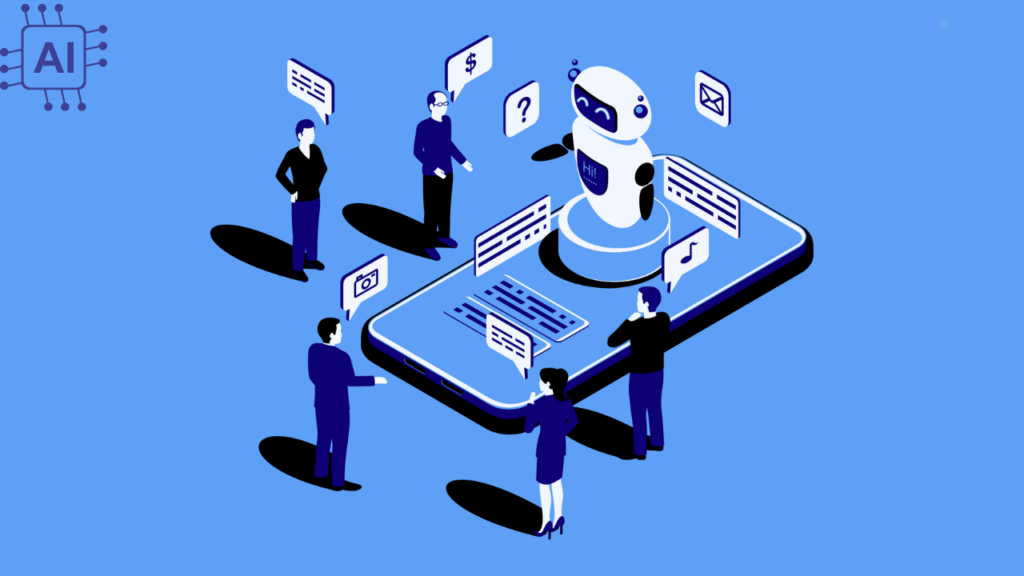
In today’s fast-paced, technology-driven world, businesses are constantly searching for ways to streamline operations and enhance customer interactions.
One of the most powerful tools that has emerged in recent years is the chatbot. As artificial intelligence (AI) continues to evolve, chatbots are becoming a go-to solution for many companies, particularly in the realm of customer service.
Chatbots have revolutionized how businesses interact with their clients, providing a scalable, efficient, and cost-effective way to handle common customer queries and improve overall customer experience.
The Rise of Chatbots in Customer Service
Chatbots, powered by AI and machine learning, are designed to simulate human conversations, helping customers get the information they need quickly and efficiently.
In the customer service domain, they handle a broad spectrum of tasks, from answering frequently asked questions (FAQs) to resolving issues in real-time.
What makes chatbots particularly appealing is their availability. While human customer service representatives may be limited by time zones, work hours, or staffing shortages, chatbots are available 24/7, ensuring that customers receive immediate attention whenever they need it.
For businesses, this availability translates into increased customer satisfaction, as users don’t have to wait in long queues for assistance.
Additionally, chatbots significantly reduce operational costs, as they can handle a large volume of inquiries simultaneously, freeing up human resources for more complex tasks.
Benefits of Chatbots in Customer Service
1. Instantaneous Response Time
One of the most obvious benefits of implementing a chatbot in customer service is the instant response.
Customers expect quick resolutions to their inquiries, and chatbots can meet that demand.
Unlike human representatives who may need time to investigate a problem, chatbots, armed with pre-programmed responses or access to a company’s knowledge base, can instantly provide accurate information.
This instant response is particularly beneficial for answering simple inquiries, such as product availability, store locations, or order status updates.
By quickly addressing these common questions, chatbots not only satisfy the customer but also lighten the load for human customer service agents.
2. 24/7 Availability
In an increasingly global market, businesses must cater to customers across different time zones. Chatbots provide a solution to this challenge by offering round-the-clock availability.
Whether it’s during business hours or in the middle of the night, chatbots are always ready to assist.
This uninterrupted service leads to a more positive customer experience and can even help businesses expand their reach to international markets without having to worry about setting up separate teams for different regions.
3. Multitasking Capability
Another strength of chatbots is their ability to handle multiple interactions simultaneously.
Where a human customer service agent is limited to dealing with one customer at a time, chatbots can engage in hundreds, even thousands, of conversations at once.
This scalability makes them an invaluable asset for businesses experiencing high volumes of customer inquiries.
Especially during peak times, such as during sales promotions or new product launches, chatbots can ensure that no customer is left waiting.
4. Reducing Human Error
While human representatives may occasionally make mistakes due to exhaustion or miscommunication, chatbots follow their programming meticulously, reducing the risk of human error.
By ensuring that customers receive consistent and accurate information, businesses can enhance their credibility and trust with their audience.
5. Data Collection and Insights
One often overlooked advantage of chatbots is their ability to collect data during customer interactions.
They can record and analyze the types of questions customers frequently ask, the issues they encounter, and their overall satisfaction levels.
Businesses can use this data to improve their services, refine their customer service strategy, and anticipate future customer needs.
By offering insights into customer behavior, chatbots help companies make data-driven decisions that lead to better overall service.
Challenges in Implementing Chatbots for Customer Service

Despite the many advantages chatbots offer, they are not without their challenges.
A common criticism of chatbots is that they lack the human touch. While AI has made significant strides in mimicking human conversation, many customers still prefer the empathy, understanding, and nuance that only a human agent can provide.
For complex issues or sensitive topics, a chatbot may not be the best solution, and companies need to ensure they have a seamless process for escalating these queries to a live representative.
Additionally, chatbots must be continuously updated and improved. As businesses evolve and customer needs change, chatbots need to be recalibrated to remain relevant and effective.
A chatbot that provides outdated information or struggles to comprehend user intent can quickly frustrate customers, leading to dissatisfaction.
Best Practices for Using Chatbots in Customer Service
1. Design for Conversational Clarity
When developing a chatbot, it’s crucial to ensure that its responses are clear and concise.
Overly complex or vague answers can frustrate users and defeat the purpose of having a chatbot in the first place.
It’s also important to include natural language processing (NLP) capabilities so that the bot can understand variations in phrasing and intent, ensuring that it can handle diverse customer queries effectively.
2. Seamless Handoff to Human Agents
Even the most advanced chatbot cannot solve every customer issue.
That’s why businesses must have a plan in place for seamlessly transferring customers to a human agent when necessary.
This should be a smooth process, where the human representative is fully briefed on the customer’s issue, so the customer does not need to repeat themselves.
3. Regular Updates and Maintenance
Chatbots should not be a “set it and forget it” solution. They need regular updates to improve their capabilities and ensure that they are delivering relevant, accurate, and up-to-date information. Businesses should also monitor chatbot performance by collecting feedback and analyzing interaction data to make ongoing improvements.
4. Personalization
Incorporating a level of personalization into chatbot interactions can go a long way in creating a better customer experience.
For example, a chatbot can address the customer by name, recall their purchase history, or recommend products based on their previous inquiries.
These small touches can make a chatbot feel more human and enhance overall customer satisfaction.
The Future of Chatbots in Customer Service
As AI and machine learning technologies continue to advance, the role of chatbots in customer service will only become more prominent.
With the integration of voice recognition technologies, chatbots will soon be able to handle voice-based interactions, further improving the accessibility and convenience of customer service.
We are also likely to see more sophisticated AI-powered sentiment analysis that will allow chatbots to gauge a customer’s emotions and respond accordingly, offering a more empathetic customer experience.
In conclusion, chatbots represent a significant step forward for businesses looking to streamline their customer service operations.
By providing fast, reliable, and scalable solutions, chatbots enhance customer satisfaction while reducing operational costs.
As this technology continues to evolve, companies that embrace chatbots as part of their customer service strategy will undoubtedly gain a competitive edge in the marketplace.


